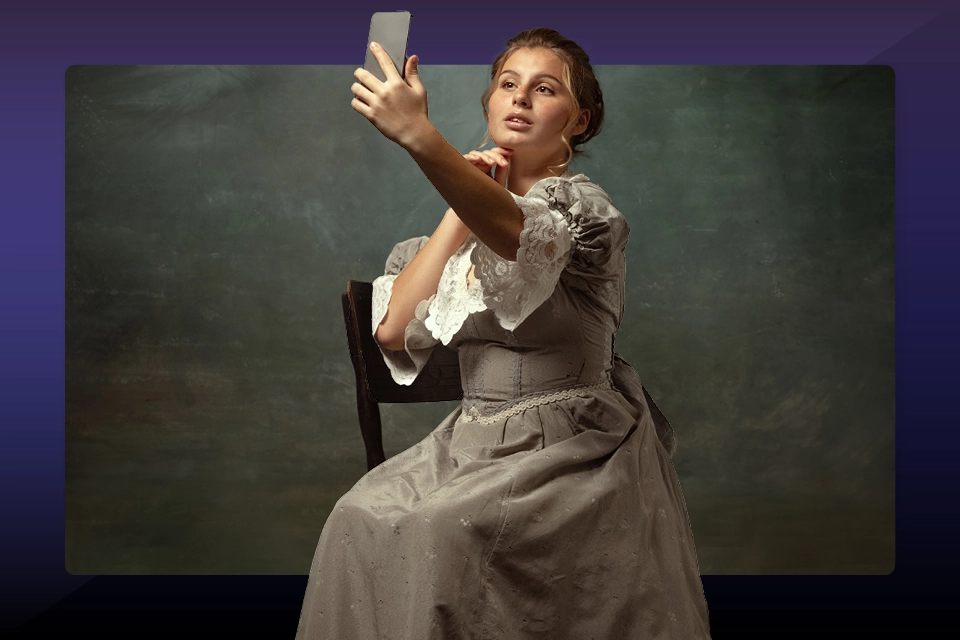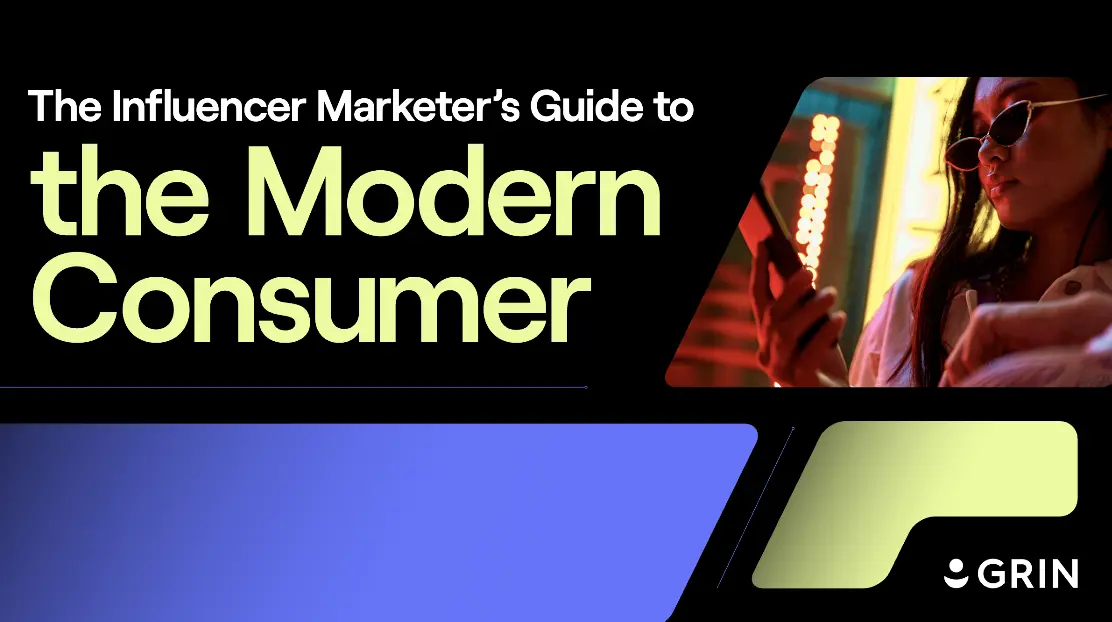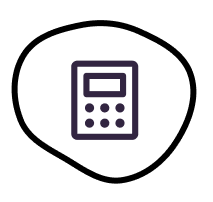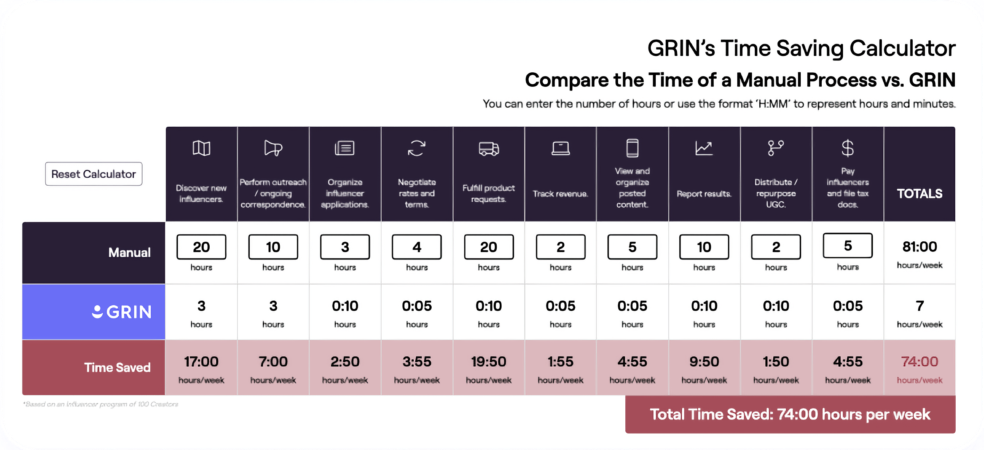Let’s say this first: marketing is always about touching consumers in such a way that they’re moved to take action. You’re tapping into human emotion, and Instagram—with its endless photos of people navigating life—is one of the most effective channels marketers have to accomplish that.
But, appealing to the humans who use Instagram and the algorithms that feed your content to them can be a difficult tightrope to walk. Add to this the fact that the Instagram algorithm—any algorithm, really—receives regular updates both minor and major, and the job of a marketer can become overwhelming.
But what does “the Instagram algorithm” even mean, really? And how much control does IG actually have over what we see on our feeds? We’re going to explore the Instagram algorithms (yes, there are more than one), how they’ve evolved, what’s new to the platform, and how you can use all of it to develop a rock-solid social media strategy in 2025.
What is the Instagram algorithm?
Calling it “the Instagram algorithm” is a misnomer. Instagram doesn’t have a single overarching “algorithm” that dictates what people see or don’t see on the app. Your main Feed uses its own, while Stories, Explore, and Reels each have a dedicated algorithm, as well. They all have their own unique processes with the same goal in mind: delivering the content it thinks each user wants to see.
“We want to make the most of your time, and we believe that using technology to personalize your experience is the best way to do that.”
— Adam Mosseri, head of Instagram
Old school Instagrammers remember the chronological news feed that Instagram featured when it launched in 2010—and rejoiced when the platform (sort of) brought it back.
But the fact is, as more users joined Instagram, and before they moved away from the chronological algorithm, users were missing as much as 70% of all posts in their feed. This was the driving force behind the update that introduced ranked feeds in 2016.
Understanding Instagram’s ranking system
Instagram Feed, Explore, Stories, and Reels each use a specific algorithm to personalize every user’s experience. Each of these different sections of the IG app serve a different purpose, so their respective algorithms are going to use different criteria to determine what gets served.
Most users like to see what their friends are up to in Stories, for example, so Instagram prioritizes those close connections. On the other hand, Instagram generates the Explore tab to show more unfamiliar content. Knowing how these different systems work is key for marketers who want to make their content perform better on all parts of the platform.
Another key element of Instagram’s ranking system is the difference between “connected reach” and “unconnected reach.” Connected reach is how much of your content is shown to your existing followers, and unconnected reach is how much it’s shown to people who don’t yet follow you.
Watch time is a major factor in both connected and unconnected reach. However, likes play a bigger role in connected reach than unconnected, while sends play a bigger role in unconnected reach. That means if you want to nurture your existing audience, think about what kind of content would motivate them to hit “like,” and if you want to gain new followers, focus on creating content that makes people want to share with their audience.
How Instagram ranks Feed content
The ranking algorithm for your IG feed follows a step-by-step process. It begins by defining the content to rank by considering recent posts from accounts you follow and posts from accounts you may find interesting.
Personalization is key here. IG takes into account factors like your interactions, preferences, and even format preferences such as photos. These factors, referred to as “signals,” encompass various aspects like post timing, device usage, and engagement habits.
Some of the main signals IG uses to rank your Feed include:
- Your activity: Posts you’ve liked, shared, saved, or commented on help IG understand what else you might be interested in.
- Post info: IG considers how popular a post is, i.e., how quickly the content racks up engagements.
- Info about the poster: By examining the poster, IG can get a feel for how interesting you might find that person.
- Your interaction history: IG looks at your comment history to gauge your interest in seeing posts from a particular account.
- When something is posted: Instagram’s priority is to serve you fresh content, so the newest posts can often take priority. If it’s been a few days or more since you last logged on, you’ll get a more curated feed of what it considers its “top” posts.
How Instagram ranks Stories
The Stories you see are from accounts you’ve followed, as well as ads. IG excludes ads from its ranking system and shows you feeds based on input signals like:
- Viewing history: Accounts you view more often move to the front of the queue. Accounts you view more often and whose Stories you watch all the way through move to the front of the front of the queue.
- Engagement history: IG prioritizes users whose Stories you send a DM or like to.
- Closeness: IG looks at your relationship with the poster and how likely it is that you are actual friends or family. This is determined by the frequency of messages you share with that person, as well as tags and mentions.
How Instagram ranks Explore
Explore is meant to help you discover content from accounts you don’t follow. To curate photos and videos for you, IG examines your past engagements and arranges groups of content based on how interested it thinks you’ll be in each one.
The most important signals include:
- Post info: IG is mostly looking for post popularity, i.e., how quickly others are engaging with it. According to Instagram, this signal matters much more in Explore than in your Feed.
- Your Explore activity: If you’ve interacted with Explore content in the past, IG will serve you content similar to what you already engaged with.
- Your history of interacting with the poster: The goal is to show you content from folks you’ve never heard of. However, if you’ve engaged with them in the past, IG recognizes you might want similar authors.
- Info about the poster: If a lot of people have engaged with the poster within a few weeks, IG prioritizes them for Explore content.
How Instagram ranks Reels
Like Explore, Reels aims to show you content you’re unfamiliar with. IG surveys users to determine which reels are the most entertaining, as well as looking at several signals, including:
- Your activity: IG looks at which reels you’ve saved, liked, reshared, and/or commented on.
- Your interactions with the poster: If you’ve interacted with the person who posted, the algorithm determines you’re probably interested in what they share.
- Info about the reel: These signals include content within the video, like the audio track or visuals.
- Info about the poster: The number of followers and engagement rates plays a role in determining which content the algorithm deems compelling.
What’s new on Instagram in 2025?
One thing you can count on: If the earth is still spinning, then Instagram will keep updating. Here are some of the biggest updates to be aware of:
Trial Reels feature
Trial Reels is a new feature for people who want to expand their reach by posting more Reels, but don’t want to annoy their existing followers by posting so many Reels that existing followers lose interest.A Trial Reel doesn’t get shown to your existing followers, just people who aren’t following you yet. The Reel doesn’t show up on your page either. You can create several Trial Reels without worrying about annoying existing followers. Then if one particular Trial Reel does really well, you can make it a normal Reel that does get shown to your followers.
Threads for Creators
Threads, Instagram’s X/Twitter alternative, has been growing in popularity since it debuted in July 2023. Creators on Instagram have been using it as an additional way to gain followers by sharing thoughts, opinions, and announcements. Because of this, Instagram made a Threads for Creators page explaining Threads’ features.
Some Threads features creators are taking advantage of include interacting with followers through polls, making voice recordings to go along with posts, and cross-posting Threads content to Instagram. As Threads continues to become more popular, Instagram is sure to introduce new features and updates in 2025 and beyond.
Algorithm enhancements
Instagram announced a few changes to their algorithms that show the platform’s intent to challenge TikTok, where accounts of any size have as good a chance as any to go viral.
To that end, Instagram has changed the way it ranks content.
Previously, they’d analyze how an account’s followers engaged (or didn’t) to determine if the content was good, but this had the effect of prioritizing larger accounts. They’ve changed the method of ranking to something more equitable, so smaller accounts now have as good a chance as larger ones to find audiences.
The algorithm now also prioritizes original content over reposts, regardless of who it came from. When the algorithm detects identical content, it will always recommend the original over the duplicate.
Toward this end, the algorithm will no longer recommend aggregator accounts (also known as meme accounts). Any account that reposts other users’ content 10 or more times in 30 days is deemed an aggregator account, and will not be shown to be people who don’t already follow the account.
Updates to Stories
In August, Instagram rolled out new features to Stories with an eye toward more personalization/self-expression for creators. That included:
- New fonts, text animations, and effects for both Reels and Stories
- The ability add text and stickers to photos and carousels
- An increased carousel limit from 10 to 20 photos and videos
They followed up these updates just a few weeks later by announcing the addition of “Story Comments.” Previously, anyone who watched a story could only respond with an emoji reaction or DM. Story comments work like Feed comments on a public post, but without being so public. Only mutuals can comment on a story, and the comments are only visible to people who follow the poster.
Questions & answers
It’s a simple button added to the Instagram Live stream: a question mark in a box. But that one option facilitates a whole new way to livestream. By tapping the button, an overlay opens at the bottom of your screen that shows only questions being asked. Especially for popular creators, the comments can come at you fast and furious, and this simple way of filtering down to just questions makes the livestream much more interactive.
Tips for improving your reach on Instagram
Give your content a consistent theme.
Getting more reach on Instagram in 2025 is about posting content regularly and making sure your content has a consistent theme. Adam Mosseri recommends posting multiple times per week, and he also recommends making sure the theme of your content is consistent.
When people discover your page for the first time, they’re going to look for the theme of your content to see if it resonates with them. If your content jumps around between multiple topics, newcomers to your page won’t understand what your page is about. But if they notice a consistent theme that appeals to them, they have an incentive to follow you.
Use audio, and not just for Reels.
Instagram has made it easier for creators to get discovered by new people and grow their audiences. One way to boost your chances of getting seen by new people is to use catchy, engaging audio in all your posts, not just Reels. You can add audio to photos and carousels to catch people’s attention, keep them looking at your content longer, and make a stronger emotional impression.
Be original.
Because the algorithms now heavily favor original content, brands and creators should focus on producing fresh, innovative photos and videos (but especially videos). When collaborating with creators, it’s essential to vet them carefully to ensure they’re not pegged as aggregate accounts.
Look for creators who consistently produce original content and have a genuine following (and creators: be mindful of how much you’re reposting on your own account). Creating original content may take more effort, but it’s far more likely to be rewarded with visibility and engagement.
Get people talking.
The introduction of Story Comments gives brands and creators a new tool for encouraging engagement. This feature creates an exclusive space for interaction, as only followers can see—and only mutuals can make—comments on a given story.
This kind of exclusive engagement can drive FOMO (fear of missing out) among non-followers, especially if they see there’s a lot of activity, encouraging them to join the fold. By consistently posting engaging stories that spark conversation, you can create a sense of community among your followers while simultaneously attracting new ones.
Keep it Reel. Reel short.
Stories are great for community content, but Reels have become the leading format on Instagram. Reels typically receive more views and interactions than Stories, while also getting three times the engagement.
The algorithm favors shorter content. In January 2025, Instagram CEO Adam Mosseri advised creators that making Reels longer than three minutes can hurt your reach. It’s a good idea to go much shorter than that though, since watch time has such a strong effect on your reach, and longer videos risk not being watched all the way.
Aim for Reels between 15 to 60 seconds to maximize your chances of reaching a wider audience and boosting engagement. Remember, the key is to create entertaining, informative, or inspiring content that captures attention quickly and encourages viewers to engage.
Use relevant hashtags.
Using relevant hashtags is still one of the most effective ways to increase your reach on Instagram posts. Websites like Hashtagify, RiteTag, and Iconosquare are solid resources to help find which popular hashtags might work best for your brand.
Keep in mind that more hashtags are not always better. Using 10+ hashtags might work well for someone with under 1,000 followers, but you should cut back as your audience grows.
Host a live Q&A.
Whether you’re a popular creator, or a brand working with one, a live Q&A is a great way to drum up interest in your account. These live events can be scheduled in advance, allowing you to build anticipation and promote the Q&A to your followers and beyond.
During the session, you can make use of Instagram’s question button, making it easier than having to find one in a torrent of comments coming through—this will make the whole thing feel more organized, like a Reddit AMA.
Raise awareness, but not for you.
Nonprofits are able to use Instagram Live for fundraising, and it’s not just limited to their own content. Anyone starting a livestream has access to the Donate button, and tapping it brings up a list of nonprofits you can fundraise for. Being charitable should be its own reward, but the fact is it’s also a great look for Gen Z shoppers. Ethical consumption is on their minds, and they’re likely to gravitate towards brands that don’t just talk the talk, but walk the walk.
“A strong ethical stance features highly as a key consumer desire for the industry. This is particularly popular among younger generations of consumers, with 39.2% of 16-24-year-olds agreeing they’d like to see more of an ethical stance from influencers in the future.” — Takumi, Into the Mainstream: Influencer Marketing in Society
Influencers are also market research.
You can get any number of vital metrics, data, and insights about your audience, or that of the influencers you work with. We all know that these can help you refine and perfect your content strategy over time.
But marketers cannot live by data alone: Lean on your influencers to find out what their audiences like. This can be about trends specific to Instagram or in the culture at large. If you’re hosting a fundraiser, they’ll know which charities would resonate with their audiences. The talent you work with isn’t just their audience’s conduit to finding you, they can be the key to you finding how best to find and reach them.
Be social.
It is social media, after all. Creators and brands both have audiences that want to be part of their communities. Social media got that name for a reason—be social. Use your account to interact with your audience, and also to share something more of yourself beyond your personal brand (or brand story).
Key takeaway: Use all the tools at your disposal to work the Instagram algorithm in 2024.
To be successful on Instagram in 2024, you can’t just do what’s always worked. Instagram changes and so your strategies have to change with it. By staying on top of Instagram’s constant upgrades and incorporating them into your influencer marketing strategy, you can ensure your success this year—and well into the future.
Learn more about influencer marketing: Influencer Marketing 101
























